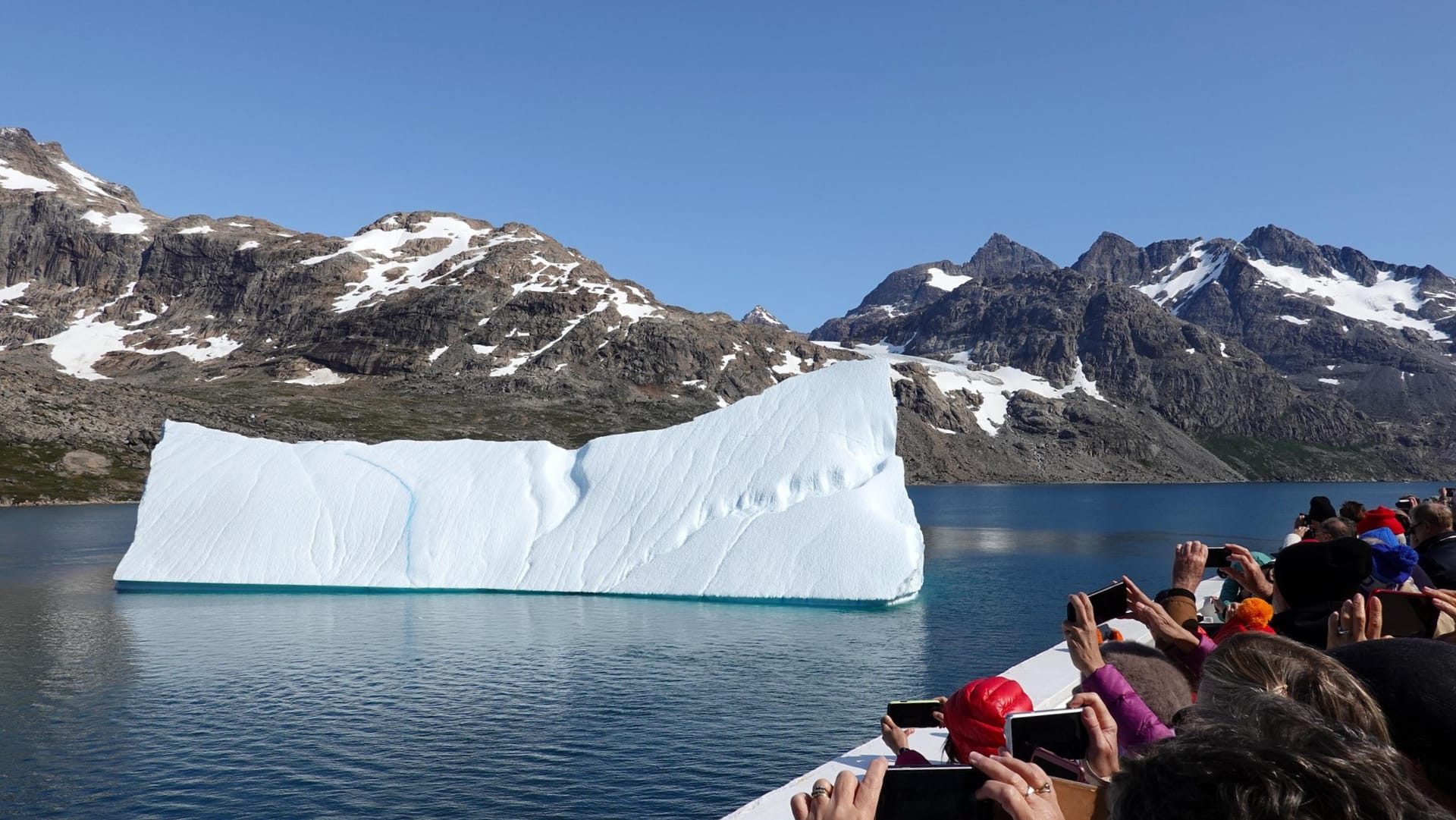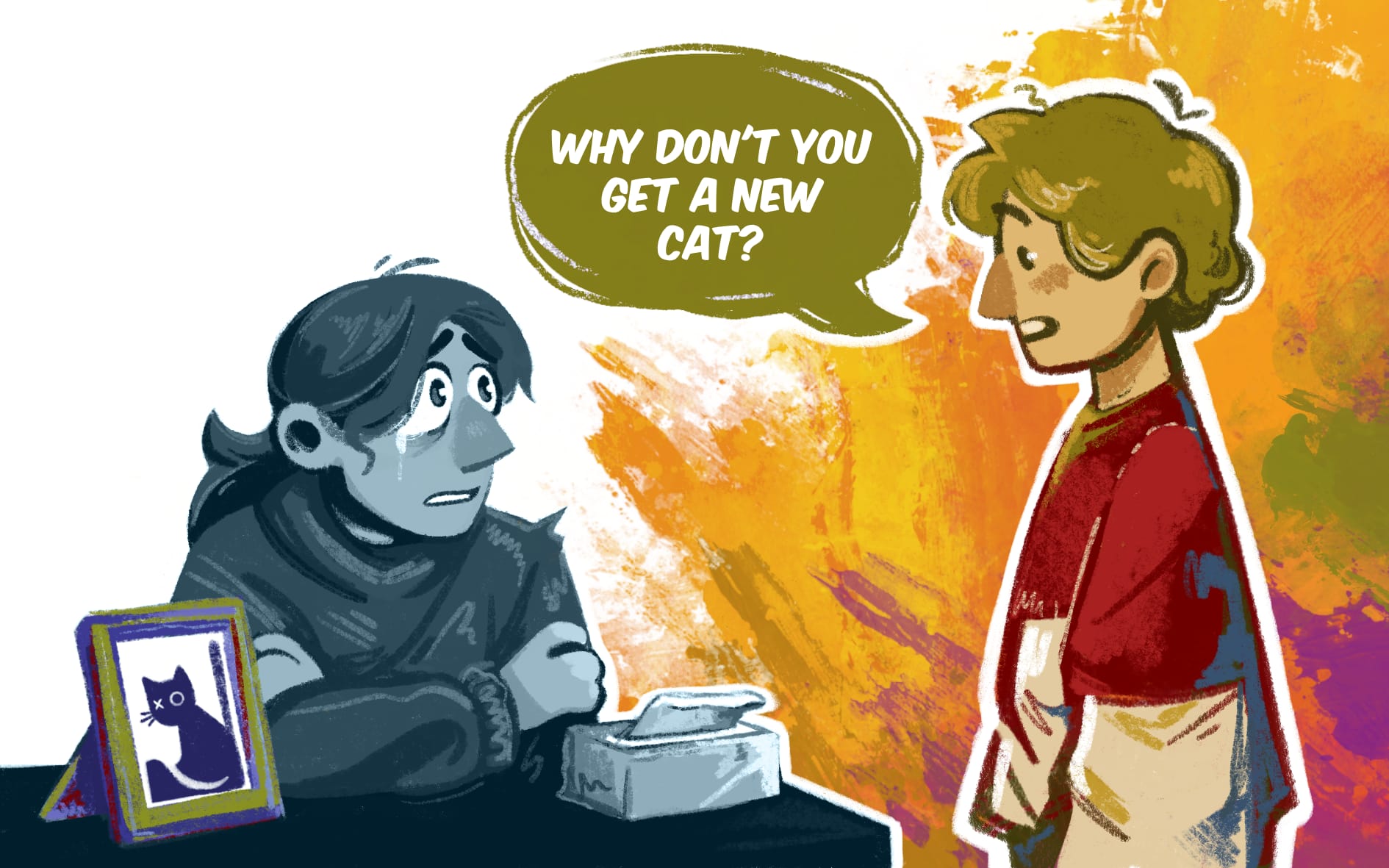
Holidaying on Thin Ice: The Role of Polar Tour Guides in Last Chance Tourism
In 2017, I travelled to the Great Barrier Reef, or rather, I happened to be in the area and felt like the next logical step would be to squeeze the Great Barrier Reef into my travel plans. Because, you know, who knows if I’d ever hang around that area again? At the time I was pretty young, but I had definitely heard about climate change and was aware that the reef, like many, was subject to extensive coral bleaching. So, of course, I wanted to see the GBR first hand; before it was gone for good. This is a phenomenon called last-chance tourism, a term widely used to describe a person’s desire to bear witness to a place or ecosystem shortly before it is expected to vanish (Vila et al., 2016).
I booked a budget-friendly day-trip to the outer range of the reef, remote enough to experience marine wildlife but still a highly frequented destination for low-budget travellers. On the boat, about three dozen excited, sun-bathed backpackers were deposited into the shallow waters with a mild reminder not to take any (coral) souvenirs. Shortly after, we were assigned a snorkeling guide, who ventured off to deliver us some memorable wildlife encounters, which would be photographed and marketed to us afterwards.
Underwater, disappointment spread among the tourists—there wasn’t much there, really. Some bleached coral and the occasional colorful fish, but we were promised turtles, sharks, sting rays. None of them bothered to show up. As the guide gauged the emotional state of his clients, he turned resourceful. He quickly dived down to some sort of cave and poked one of his snorkeling fins into the dark. And yes, there was movement. Excitement rose—a shark had been sighted. Noting the excited fin-flopping, hand-waving, and go-pro-clicking armada behind him, the guide kept poking into the cave. Inside, you could glimpse the shark clinging to the back wall in distress (as much as a shark can cling on to anything). Subduing to the fin poking, the tiny nurse shark finally emerged from his cave, its exit facilitated by a selfie stick enhancing the guide’s range of poking, eventually pushing it out. Under a choir of underwater ‘awe’s and ‘wooow’s, we admired the shark’s exit as it vanished into the distance with the speed of light.
I remember not feeling great about this, but I also remember not thinking much about it. Years later, this image came back to me when I first got in contact with the department of environmental psychology at the RUG, hearing about the concept of tourist ambassadorship. The idea that tourists would advocate and care for the environments they had visited upon their return home (Alexander et al., 2020). Someone had asked me whether I had ever travelled on a guided tour into the polar regions and I remembered that the only guided tour I had ever taken was in Australia, where a guide had forced a distressed creature out of its shelter. Because that’s essentially what it was, I realised.
It made me think whether I had turned into a tourist ambassador afterwards and honestly, I don’t know. Yes, something had not sat right with me; I felt uncomfortable throughout the entire reef cruise. Somewhat disturbed by the heavily marketed images of an idyllic cruise which ended up inflicting severe distress onto the wildlife, in combination with a probable deposit of gallons of sunscreen onto a dying reef. However, what I was sure about was that the guide had left a prominent impression on me. He had normalised this on-site behaviour in order to provide momentous entertainment for a bunch of bucket list travellers. He had used his powerful position not to raise awareness about wildlife conservation but to provide us with a ‘fun’ experience at the expense of local wildlife.
This experience accompanied me when I eventually set out to examine the role of polar tour guides in the process of turning tourists into polar ambassadors within the scope of my master thesis.
Polar Tourism
Did you know there was tourism in the polar regions? Because I certainly did not before I started working on the GUIDE-BEST project with the Arctic Centre Groningen. In 2024, 122,000 visitors set out to start their epic cruise to Antarctica, nearly tripling since the 44,000 visitors in 2017 (Frost, 2025). The polar regions are extremely susceptible to climate change and function as earth system tipping points. This means that climate-induced changes in the polar regions might produce severe and potentially unstoppable ripple effects onto the planetary climate (Lenton et al., 2008; IPCC, 2022).
Paradoxically, rising awareness about the polar regions’ role in the global climate and the future of our planet has resulted in increasing demand for tourist expeditions setting out to witness these regions under hardship. An industry which is steadily growing (Eijgelaar et al., 2010). Similar to my experience in Australia, the demand is mainly driven by last-chance tourism and arctification—the romanticised image of visiting the last frontiers of human influence: untouched, savage, polar regions yet to be developed for tourism (Varnajot et al., 2024). Shown to be one of the most CO2 intensive activities within the tourism industry (Eijgelaar et al., 2010), polar tourism initiates a vicious cycle: by accelerating deterioration of the polar ecosystem, it reinforces last-chance tourism activity (Vila et al., 2016).
Controversially, recent research challenges the negative impact of polar tourism by raising the thought that tourism in these regions might produce a positive impact; as tourists are inspired to care and advocate for the polar environments when they return home. Positive impact that might manifest as pro-environmental behaviour, behaviour that benefits the environment, turning tourists into ambassadors of the polar regions (Alexander et al., 2010; Vila et al., 2016). Hereto, the phenomenon has not been examined empirically (Vila et al., 2016) but ambassadorship is assumed to arise through first-hand contact with extraordinary environments (Alexander et al., 2020) following a moment of ‘awe’ (Powell et al., 2011).
The Role of the Guide
At this point, I was thinking back to my Great Barrier experience where ‘awe’s were voiced here and there, however, I could not forget about the guide’s role in shaping my experience as he was mediating—or rather, enforcing—the human-wildlife encounter. To me, this guide was influential, more so than the actual experience. It was this rationale that I decided to pursue in my thesis: investigating the role of tour guides in turning tourists into polar ambassadors. Moving beyond the narrative of tourists being naturally touched by the polar environments and automatically turned into polar ambassadors, I suggested that we had to look more closely at the individuals positioned at the centre of the expedition experience.
I did so by interviewing eleven polar tour guides, investigating the motivations with which they entered the industry, their guiding goals, guiding behaviour and perception of agency within their work field.
A large body of tourism research has previously identified the special role of tour guides (Jamaliah et al., 2021; La Cour, 2023). Oftentimes tour guides are understood as educators, sources of information to the tourists who interpret their surroundings and transfer knowledge (Weiler & Ham, 2001). They might also act as role models, showing tourists how to behave environmentally friendly in sensitive environments (Omma, 2024), aiming to pass on ecological consciousness (Higgins-Desbiolles, 2009). Taken together, tour guides are attributed an important role in conveying sustainable tourism practices, functioning as a bridge between tourists and nature.
However, thinking back about colourful pictures of happy turtles advertising my Australian day-trip, I started to wonder to what extent the guides in the polar regions I was going to interview would perceive themselves as capable of acting environmentally friendly and conveying these values to the tourists. Remembering my fellow snorkelers’ disappointed faces prior to the shark encounter, it made me wonder if my guide was under pressure to deliver the experience people had signed up for or if he was merely unaware of his role model function.
Too Many Hats, Too Little Agency
Novel research has shown that actors in influential positions sometimes need a little prompt, a little reminder of their own powers to make a (environmentally-friendly) change (Duncan et al., 2024). And yes, I do believe that guides are powerful. What I learned in the interviews I conducted with polar tour guides aligns with this notion. Many of them view themselves as mediators or bridges between nature and tourists and take their role as educators seriously as they try to convey a message of conservation and environmental awareness. Simultaneously, they are constrained in their range of influence. Needing to juggle too many balls, too many roles, at the same time they are caught in a constant tight-rope act of balancing their wish to create awareness about the polar regions’ environmental threats and fulfilling client and company expectations; shaping the trip according to what was sold.
‘They are on a holiday’, seemed to be one of the most articulated sentences highlighting the need to land the experience somewhere between educative and fun.
Drawing from the preliminary analysis of my interviews I believe the guides need help to bring their message across, need help to be heard, to be listened to. And I think this is precisely where the industry has to step in to bring these changes about, and who fuels the industry’s agenda if not the tourists?
I do believe that people have the right to enjoy their holiday. Yes, it cannot all be ‘doom and gloom’ as one guide phrased it. But we have to do so responsibly. It might entail that we have to consider whether we should prioritize taking a selfie with a penguin over respecting their space. It might mean to consider whether it’s necessary or ethical to devour a salmon steak on a polar cruise ship, fed by the very krill that trawlers are extracting in the polar regions disrupting the local marine life. Marine life which grew dear to us the last time we watched David Attenborough’s documentary about our oceans with tears in our eyes. It’s precisely this conflict, this inconsistency within the polar tourism industry but also within ourselves that makes it so hard to do the right thing.
If two or more of your beliefs or behaviours are in conflict with one another, scholars talk about experiencing dissonance (Festinger, 1992). The feeling of discomfort possibly resulting from experiencing a moral dilemma which means facing a choice in which both outcomes seem morally unacceptable (Crowder & Turvey, 2013). Yes, we love salmon and have a right to treat ourselves but we don’t want to support harmful krill trawling. Or as one of the guides put it:
“[…] Well, maybe you shouldn’t go. So there’s this awareness of the world’s falling apart, but we do want to go there before it happens. But they don’t understand that by going there you actually, your footprint is huge, so you’re part of the problem. I am facilitating that.”
— Miriam*, polar expedition guide
A realization that has driven many of these pro-environmentally oriented guides to consider leaving the industry behind.
Today, despite heightened awareness of environmental issues, the number of pro-environmental actions are generally declining (Twenge et al., 2012), a finding hinting at the idea that experiencing (cognitive) dissonance might not always drive people to act in a way that reduces this dissonance but instead they might rationalise and justify the discrepancy (McGrath, 2017). Justifications, that many polar guides are aware of:
“Like every impact is too much. Um, so in a way, some of us still keep on justifying why we’re there by telling ourselves that we can have a positive impact by educating people and raising awareness.”
— Irene*, polar expedition guide
So how can we turn this around, how can we make people act more environmentally friendly when holidaying in the polar regions and beyond? It’s a question that I cannot answer within my research. The literature has many times highlighted the role of raising awareness and educating tourists (Yuriev et al., 2020), the very quest the polar tour guides I interviewed struggled to complete. I personally believe that sometimes a change of perspective is all it takes, a spark of awareness to holiday respectfully and sustainably. It means to consider how the shark felt when he was pushed out of his home by a strange creature with a stick because they were fascinated by his movements. So this summer, travel light but don’t leave your conscience behind.
*Pseudonyms were used to respect the privacy of the interviewees.
Image Credit: Header image is shared for free-use under pixabay content license by user dassel.
References
Alexander, K. A., Liggett, D., Leane, E., Nielsen, H. E. F., Bailey, J. L., Brasier, M. J., & Haward, M. (2020). What and who is an Antarctic ambassador? Polar Record, 55(6), 497-506. https://doi.org/10.1017/s0032247420000194
Duncan, S., Hjelmskog, A., & Papies, E. K. (2024). No agency and responsibility for the privileged? Perceptions of climate action among high socioeconomic status citizens in the United Kingdom. Energy Research & Social Science, 115. https://doi.org/10.1016/j.erss.2024.103604
Eijgelaar, E., Thaper, C., & Peeters, P. (2010). Antarctic cruise tourism: The paradoxes of ambassadorship, “last chance tourism” and greenhouse gas emissions. Journal of Sustainable Tourism, 18(3), 337-354. https://doi.org/10.1080/09669581003653534
Festinger, L. (1962). A theory of cognitive dissonance. Stanford University Press.
Frost, R. (2025). Black snow, emissions and bird flu: How Antarctic cruises hurt more than they help. Green News. Retrieved 04/06/2025, from https://www.euronews.com/green/2025/01/04/black-snow-emissions-and-bird-flu-how-antarctic-cruises-hurt-more-than-they-help
Higgins-Desbiolles, F. (2009). Indigenous ecotourism’s role in transforming ecological consciousness. Journal of Ecotourism, 8(2), 144-160. https://doi.org/10.1080/14724040802696031
Jamaliah, M., Mgonja, J., Alazaizeh, M., & Powell, R. (2021). How does interpretive tour guiding promote tourists’ pro-environmental behaviour? Evidence from Tanzania. Tourism Recreation Research, 49, 1-15. https://doi.org/10.1080/02508281.2021.1992953
la Cour, E. (2023). The figure of the guide: arctic nature guiding as productive behaviour on Svalbard. Polar Record, 59, e18, Article e18. https://doi.org/10.1017/S0032247423000104
Lenton, T. M., Held, H., Kriegler, E., Hall, J. W., Lucht, W., Rahmstorf, S., & Schellnhuber, H. J. (2008). Tipping elements in the Earth’s climate system. Proceedings of the National Academy of Sciences, 105(6), 1786-1793. https://doi.org/10.1073/pnas.0705414105
McGrath, A. (2017). Dealing with dissonance: A review of cognitive dissonance reduction. Social and Personality Psychology Compass, 11(12). https://doi.org/10.1111/spc3.12362
Omma, F. M. (2024). Regenerative nature-based tourism: tour guides and stakeholder dynamics in Arctic Norway. Journal of Tourism Futures. https://doi.org/10.1108/jtf-10-2023-0237
Powell, R. B., Brownlee, M. T. J., Kellert, S. R., & Ham, S. H. (2011). From awe to satisfaction: immediate affective responses to the Antarctic tourism experience. Polar Record, 48(2), 145-156. https://doi.org/10.1017/s0032247410000720
Turvey, B. E., & Crowder, S. (2013). Ethical Justice: Applied Issues for Criminal Justice Students and Professionals.
Varnajot, A., Makanse, Y., Huijbens, E. H., & Lamers, M. (2024). Toward Antarctification? Tourism and place-making in Antarctica. Polar Geography, 47(1), 49-70. https://doi.org/10.1080/1088937x.2024.2309673
Vila, M., Costa, G., Angulo-Preckler, C., Sarda, R., & Avila, C. (2016). Contrasting views on Antarctic tourism: ‘last chance tourism’ or ‘ambassadorship’ in the last of the wild. Journal of Cleaner Production, 111, 451-460. https://doi.org/10.1016/j.jclepro.2014.12.061
Weiler, B., & Ham, S. (2001). Tour guides and interpretation. CABI, 549–563. https://doi.org/10.1079/9780851993683.0549
Yuriev, A., Dahmen, M., Paillé, P., Boiral, O., & Guillaumie, L. (2020). Pro-environmental behaviors through the lens of the theory of planned behavior: A scoping review. Resources, Conservation and Recycling, 155, 104660. https://doi.org/10.1016/j.resconrec.2019.104660



